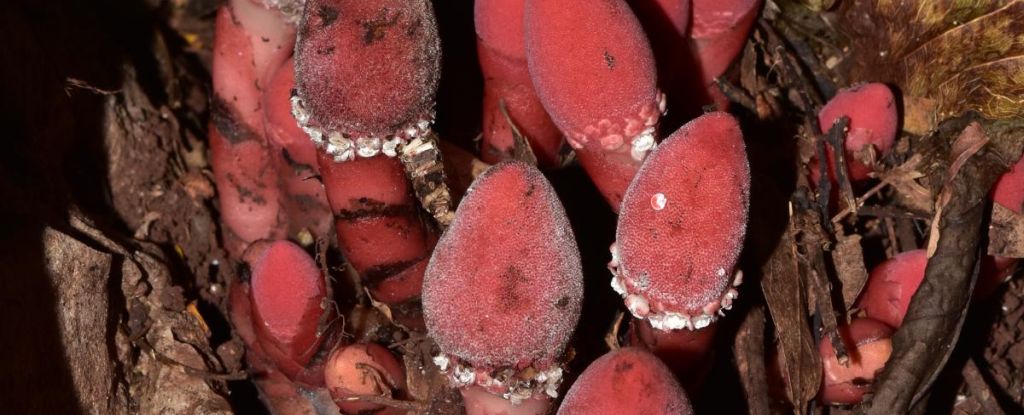Lurking in groups near the bases of trees a fascinating parasitic plants on trees was discovered, and by perfecting its survival technique, it was able to prune over a third of its genome.

Parasitic Plants On Trees – Sapria (Photo: Science Alert)
Parasitic Plants On Trees: Balanophora And Sapria
The Balanophoraceae genus a parasitic plants on trees resembles a bizarre, fleshy, pink fungus and sticks nearly phallically out of the leaf litter. The parasite is not at all like a plant, having a strong smell akin to carnal rot.
But what looks to be a mushroom top is actually a flower head, and it is closely intertwined with the roots of the tree underneath it in a successful parasitic relationship where Balanophora scavenges nutrition from the other creature.
The genome reduction of Balanophora is also unusual for a parasite and is similar to that of Sapria, a parasitic plant on trees genus that is unrelated to Balanophora but nonetheless parasitic. This is an amazing example of convergent evolution, in which very dissimilar organisms independently acquire features that are highly similar over time.
Actually, parasites are wonderful things. Their survival strategy involves locating other species that are flourishing and taking advantage of them in various ways. This is an excellent evolutionary force that can occasionally be advantageous to the host as well.
Similar Gene Sets Have Been Lost By Both Parasitic Plants On Trees
Obligate or holoparasites, which are completely reliant on their host and include parasites like Balanophora and Sapria, no longer possess the ability to photosynthesize, which is how green plants receive their nourishment.
Similar gene sets have been lost by both parasitic plants on trees. The genes involved in photosynthesis are no longer required because they are obtaining nutrients from a host. The two parasites still require a way to handle the stolen nutrients despite having kept genes relevant to metabolism.
It’s interesting that the scientists discovered both plants have lost the genes needed to produce abscisic acid, a hormone utilized by plants to signal and react to stress. Balonophora can still use abscisic acid for signaling even when it cannot produce it. This shows that in order to protect the host, it may have lost genes that would have overlapped with some host functions.

















































